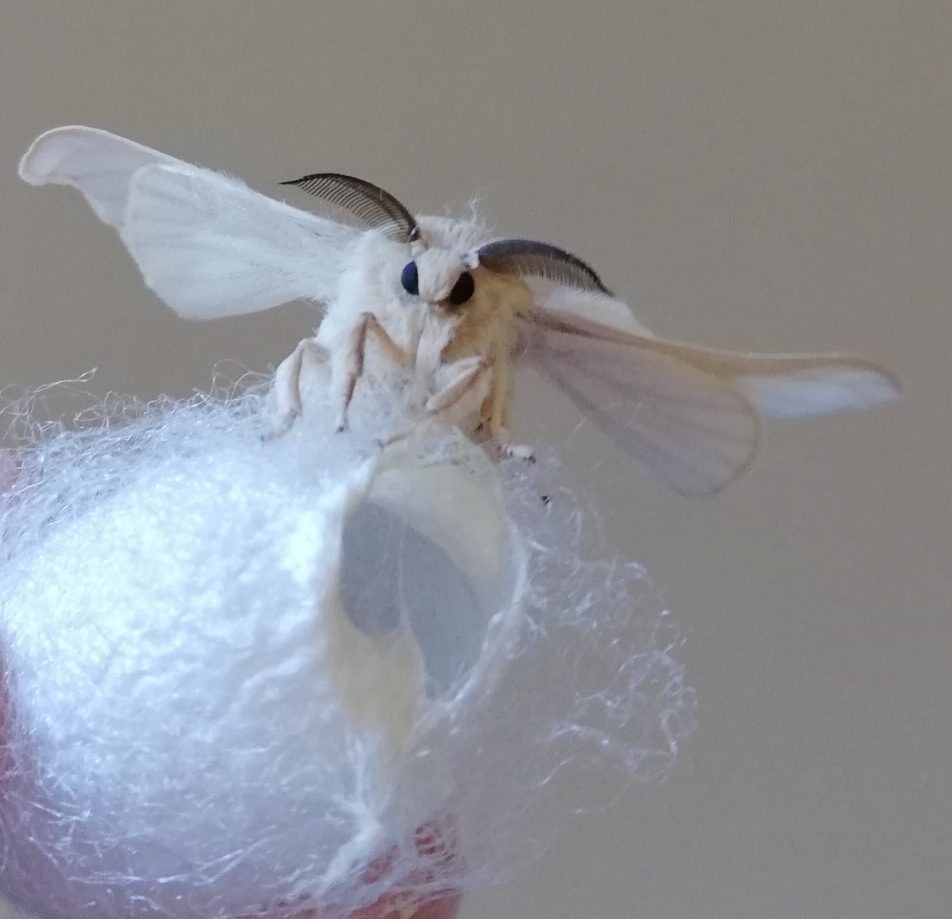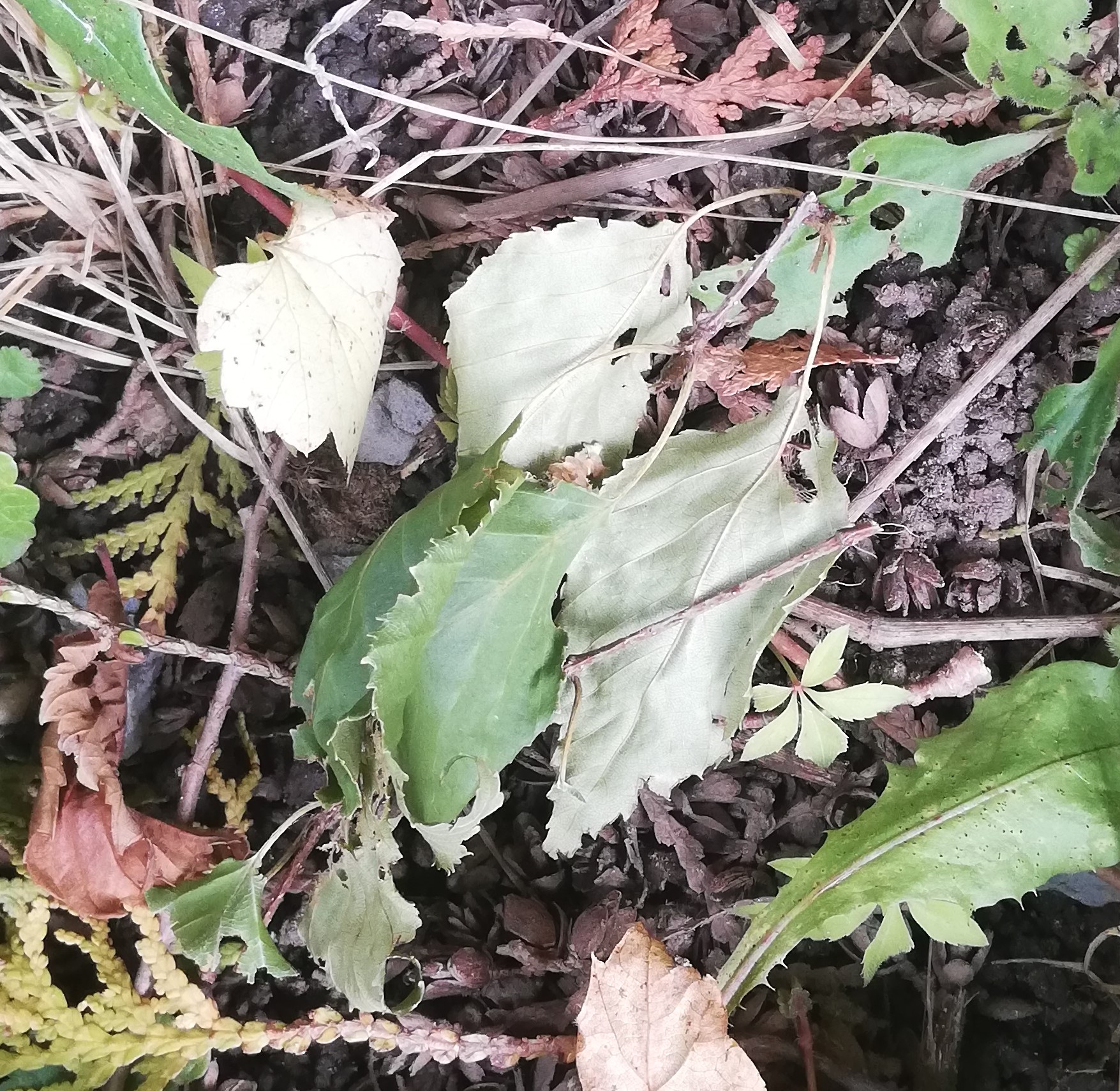What’s the difference between a cocoon and a chrysalis?
All insects that have complete metamorphosis—butterflies, moths, beetles, flies, bees and wasps—go through a stage called the “pupa” (plural: “pupae”, pronounced “pew-pee”), in which their body plan is completely reorganized. In butterflies, the pupa has a special name: the “chrysalis”. According to the Merriam-Webster dictionary, the word chrysalis comes from the Greek chrȳsós, meaning gold, referring to the metallic sheen of some butterfly pupae. Also according Merriam-Webster, the term chrysalis can be used for moth pupae, although this is uncommon in practice.
In many moth species, but not in butterflies, the larvae form a “cocoon” around themselves just before they pupate. The cocoon is made of silk, which the larvae produce in glands in the mouth. The silk we use for clothing comes from the beautiful pure white silk of the domestic silk moth (shown below). Caterpillars of many species incorporate leaves or soil into their cocoons. The cocoon hides the pupa (see the well camouflaged luna moth cocoon, below) and protects it from predators and parasitoids. Still, almost every moth species has some specialized natural enemy that has evolved the capacity to find and attack the pupa despite the presence of a cocoon. – Dr. Naomi Cappuccino

